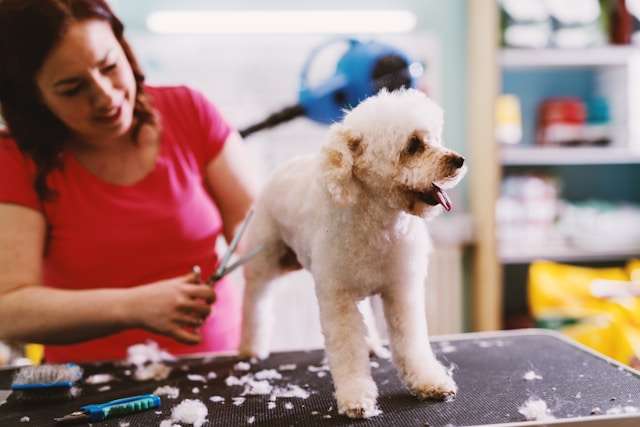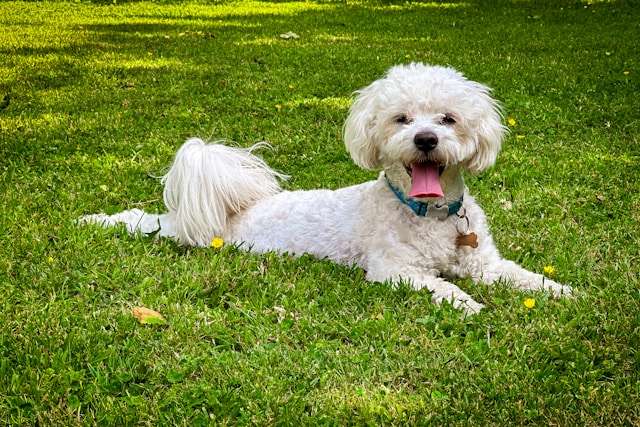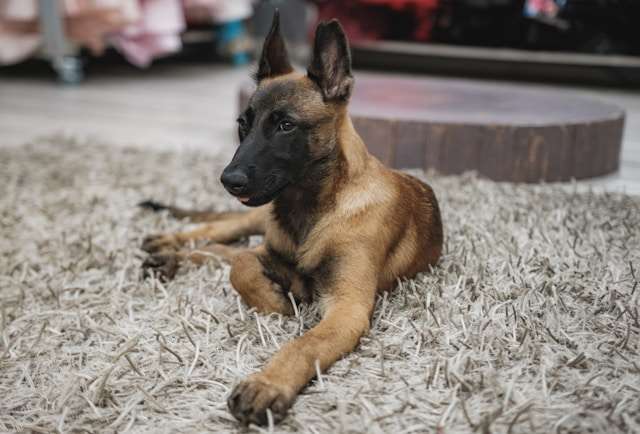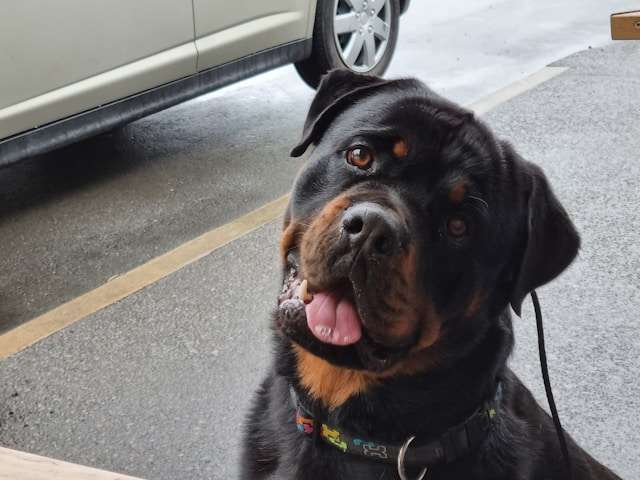The Ultimate Guide to Pomeranian Care: Tips for New Owners

My life as a Pomeranian owner has taught me that these tiny, fluffy bundles of energy bring endless joy—and quite a few surprises. Their adorable faces and spunky personalities make Pomeranians one of the most beloved dog breeds. Yet their care demands specific knowledge and dedication.
This detailed guide will help fellow Pomeranian owners guide through everything from simple care to specialized grooming needs. You might be thinking about getting a Pomeranian puppy or sharing your home with one of these charismatic furballs. Either way, you’ll discover practical advice covering every aspect of Pom parenthood.
The guide covers care, grooming techniques, nutrition requirements, health monitoring, and training strategies. Your Pomeranian deserves the best possible care, and we’ll help you build a strong, lasting bond with your furry friend.
Table of Contents
Dog Breed Guide: Find Your Perfect Companion
Essential Pomeranian Care Basics
Let’s explore everything every pet parent should know about Pomeranian care. You’ll discover their unique personality traits and learn to create a safe environment for these spirited companions.
Understanding the Pomeranian temperament
Pomeranians pack prominent personalities into their tiny frames. These intelligent and playful dogs love to explore their surroundings with natural curiosity [1]. Their adaptability to different living situations makes them unique, yet they keep their spirited nature intact. You’ll find them alert and protective, which makes them excellent watchdogs, though they need proper training to manage their barking tendencies [2].
Setting up your home for a Pom
A safe environment is vital for your Pomeranian’s well-being. Here are the safety measures you should take:
- Install cord concealers for electrical wires
- Keep medications and cleaning supplies in high cabinets
- Secure trash cans to prevent access
- Remove toxic houseplants
- Close toilet lids and secure window blind cords [3]
To ensure outdoor safety, your yard needs proper fencing and should be free from toxic plants. A specific potty area should be designated, and outdoor time needs supervision [3].
Daily care requirements
Pomeranians need consistent daily care to thrive. These dogs stay active through indoor play and short walks [4]. Their small size and delicate nature mean you should supervise their activities to prevent injuries [5].
A typical daily care routine includes:
- Exercise and Play: Two daily brisk walks of 15-20 minutes each [6]
- Feeding: Regular meals with appropriate portions to prevent obesity
- Mental Stimulation: Training sessions and interactive play
- Health Monitoring: Regular checks for any unusual behavior or symptoms
Pomeranians are indoor dogs that flourish with human companionship [7]. These little companions can become anxious during solitude and need adequate attention and interaction throughout their day.
Creating an Effective Grooming Routine
A proper grooming routine and approach will keep your Pomeranian’s signature fluffy coat looking amazing. In my experience, a good grooming routine helps these adorable companions look their best and keeps their skin and coat healthy.
Step-by-step grooming guide
Here’s the simple grooming routine you should follow:
- Daily Maintenance: Wipe the eye area daily and spot-clean as needed [8]
- Regular Brushing: Brush your Pom’s coat 2-3 times weekly, increasing to daily during shedding seasons [9]
- Bathing Schedule: Give baths every 3-4 weeks, using warm water and dog-specific shampoo [10]
- Nail Care: Trim nails every 6 weeks to maintain proper foot health [8]
Professional vs. home grooming
You should schedule professional grooming appointments every four to six weeks for detailed care [9]. Professional services cost between $20 and $90 for all-inclusive packages, while individual services like teeth brushing range from $10 to $35 [9].
Your home grooming kit needs:
- A slicker brush and metal comb
- Dog-specific shampoo and conditioner
- Nail clippers
- Ear cleaning solution
Seasonal grooming considerations
Your Pomeranian’s grooming needs shift with the seasons. You’ll need to brush more frequently during heavy shedding periods in spring and fall [11]. Here’s what you need to know:
- Summer Care: Your Pom’s coat should never be shaved because it protects from the sun and helps regulate temperature [12]
- Winter Preparation: Regular brushing prevents matting from winter gear and moisture [13]
- Spring/Fall: Remove loose undercoat during seasonal shedding [11]
Your breeder or professional groomer can provide specific grooming requirements for your Pomeranian puppy [10]. New groomers should start with simple maintenance tasks and gradually work up to more complex grooming procedures as their confidence grows [9].
Nutrition and Feeding Guidelines
Quality nutrition is the lifeblood of your Pomeranian’s health and vitality. These energetic little companions need specific dietary requirements that deserve close attention.
Age-appropriate feeding schedules
Your Pomeranian’s nutritional needs change as they age. Puppies under six months need constant access to food to avoid hypoglycemia [14]. The feeding schedule changes with age:
- Puppies (2-6 months): 3-4 meals daily [15]
- Adults (1+ years): 2-3 meals daily [15]
- Seniors (7+ years): 2 meals daily with adjusted portions
An average adult Pomeranian needs about 40-45 calories per pound of body weight each day [16].
Choosing the right food type
Food quality affects your Pomeranian’s health more than you might expect. Good quality food must include:
Essential Components:
- High-quality protein (minimum 18% for adults, 22% for puppies) [4]
- Balanced omega fatty acids to keep their coat healthy [16]
- Proper calcium-to-phosphorus ratio [14]
Both wet and dry food options have benefits. Damp food helps with hydration and tastes better for most dogs [17]. Dry food helps keep teeth clean and is easier to store and serve [17].
Preventing common dietary issues
Weight gain in Pomeranians needs careful monitoring. Their small size means slight weight changes can affect their health [16]. Here’s how to keep their eating habits healthy:
- Portion Control: Match serving sizes to weight and activity level
- Treat Management: Keep treats under 10% of daily calories [16]
- Regular Monitoring: Change portions based on weight and activity
Dogs with sensitive stomachs do better with digestible foods that contain prebiotics or probiotics [16]. Watch out for food allergies, which can manifest as skin problems or upset stomachs [18].
Regular feeding times help avoid digestive issues [16]. Talk to your vet before significantly changing your Pomeranian’s diet, especially if they need exceptional food [16].
Health Monitoring and Prevention
Our Pomeranian’s health needs constant monitoring and preventive care. Being proactive about our Pom’s health will make a huge difference in their quality of life and longevity.
Common health concerns to watch for
Pomeranians are healthy dogs that live 12-16 years [19]. We need to watch out for specific breed-specific issues. Early detection helps prevent more significant problems down the road. Here are signs you should pay attention to:
- Changes in appetite or water consumption [20]
- Difficulty breathing or unusual coughing
- Dental issues (a common problem in Pomeranians)
- Limping or reluctance to use stairs
- Changes in behavior or energy levels
- Skin problems or excessive hair loss
Establishing a vet care schedule
A consistent veterinary care schedule will give a solid foundation for your Pom’s health. Adult Pomeranians need annual checkups, while seniors over seven should visit twice yearly [21]. Your vet will:
- Check weight and vital signs
- Examine teeth, ears, and eyes
- Listen to heart and lungs
- Perform necessary blood work
- Update vaccinations as needed
You should keep detailed records of your Pom’s medical history, including vaccination documents and health issues [22].
Emergency care preparation
Good emergency preparation helps you stay calm in challenging situations. You should create two emergency kits – one for home and one for travel [23]. Our emergency kit has:
Essential Items:
- One to two weeks’ worth of pet food and medications [23]
- First aid supplies (gauze, bandages, antiseptic)
- Copies of medical records and vet contact information
- Collapsible water bowl and transportable water
- Pet first aid manual
Your evacuation plan should include your Pomeranian [23]. Team up with neighbors or relatives to ensure someone can care for your pet if you can’t [23].
You should know the signs needing immediate vet attention, like breathing problems, significant behavior changes, or extreme pain [24]. Note that you should use a harness instead of a collar for walks to protect your Pom’s throat [25].
Regular Monitoring Tips:
- Check temperature if you suspect illness (normal range: 100°F to 102.5°F) [26]
- Watch dental health closely since Pomeranians often have teeth problems [21]
- Track changes in appetite or energy levels
- Write down unusual symptoms before vet visits
Training and Socialization Strategies
Training Pomeranian companions needs patience, consistency, and understanding of their unique personality traits. These intelligent little dogs are eager to please, which makes them surprisingly trainable despite their stubborn nature.
Simple obedience training techniques
Timing matters most in Pomeranian training. Our Pom should be hungry during training sessions to increase motivation [27]. We follow this proven approach for simple commands:
- Start with short, specific words (dogs focus on first syllables)
- Use treats as original motivation
- Keep training sessions brief
- Always end on a positive note
- Practice before playtime
Commands like “stay” take 3 to 6 weeks to master [27]. Patience and consistency matter because rushing creates confusion and setbacks.
Addressing common behavioral issues
Excessive barking stands out as a frequent challenge. Pomeranians bark to warn, defend themselves, show excitement, or get attention [28]. My approach focuses on:
- Keeping our Pom busy with appropriate toys
- Ensuring adequate playtime
- Creating a safe space in the house
- Practicing proper socialization
Positive reinforcement works best for territorial behavior, which Pomeranians often display. Guests can bring treats to help our Pom associate new people with positive experiences [29].
Socialization tips and timeline
Pomeranian puppies experience their most significant socialization period in their first three months [6]. This time shapes their future personality and behavior through various experiences.
The American Veterinary Society of Animal Behavior emphasizes the vital role of proper socialization. Behavioral issues, not infectious diseases, cause most deaths in dogs under 3 years old [6].
Successful socialization requires exposure to:
- People of all ages, appearances, and behaviors
- Indoor and outdoor environments
- Household noises, traffic, and other animals
- Various walking surfaces
Positive reinforcement leads to successful training and socialization. Good behavior deserves rewards within 5-10 seconds [27]. This timing helps our Pom connect their behavior with the reward.
Puppy classes can start after the first vaccination series [6]. These classes teach basic commands and provide safe environments to socialize with other dogs and people [28].
Conclusion
Pomeranians are delightful companions who bring joy to owners and can meet their unique needs. Based on my experience, these spirited little dogs flourish with proper care in every aspect of their lives – from daily routines and grooming to nutrition and training. Their tiny size needs extra attention to safety, and their distinctive coat requires regular maintenance to stay healthy and beautiful.
These loving dogs have specific care requirements, but their adaptable personality makes them worthwhile. Successful Pom parenthood combines preventive healthcare, consistent training, and lots of affection. Your intelligent companion will respond well to positive reinforcement and proper socialization, which helps them become well-adjusted family members.
A Pomeranian might not fit every lifestyle, so explore different options with our Dog Breed Guide: Find Your Perfect Companion. Getting ready to welcome a Pomeranian? These care guidelines will help you build a rewarding bond with your fluffy friend. Note that each Pom has a unique personality, so adjust these recommendations to match your dog’s individual needs with patience.
FAQs
Q1. How much grooming do Pomeranians require?
Pomeranians need regular grooming to maintain their fluffy coat. Brush your Pom’s coat 2-3 times weekly, increasing daily during shedding seasons. Bathe them every 3-4 weeks and schedule professional grooming appointments every four to six weeks for comprehensive care.
Q2. Are Pomeranians suitable for first-time dog owners?
Pomeranians can be suitable for patient first-time owners who have extra time for training and attention. These intelligent dogs respond well to positive reinforcement but require consistent training and socialization to become well-adjusted companions.
Q3. How long can Pomeranians be left alone?
While Pomeranians can be left alone for short periods, it’s best not to leave them for more than 4-6 hours. These social dogs thrive on companionship and may develop anxiety or behavioral issues if left alone for extended periods.
Q4. What should I avoid feeding my Pomeranian?
Avoid giving your Pomeranian chocolate, caffeine, onions, garlic, grapes, raisins, macadamia nuts, and spicy foods. These can cause stomach upset or be toxic to your pet. Stick to high-quality dog food appropriate for their age and size.
Q5. How often should I take my Pomeranian to the vet?
Adult Pomeranians should have annual checkups, while seniors (over seven years) need bi-annual visits. Regular vet care monitors their health, updates vaccinations, and catches potential issues early. Keep detailed records of your Pom’s medical history for these visits.
References
[1] – https://prettypomeranian.com/pom-pom-proof-your-home/
[2] – https://apupabove.com/blogs/all/pomeranian
[3] – https://www.akc.org/expert-advice/puppy-information/puppy-proofing-tips-for-your-home-and-yard/
[4] – https://pomeranian.org/feeding/
[5] – https://www.petpom.com/how-to-keep-a-pomeranian-safe
[6] – https://www.akc.org/expert-advice/training/puppy-socialization/
[7] – https://pomeranian.org/pomeranian-temperament/
[8] – https://www.petpom.com/pomeranian-grooming
[9] – https://pomeranian.org/pomeranian-dog-grooming/
[10] – https://pomeranian.org/pomeranian-grooming/
[11] – https://pommymommy.com/pomeranian-grooming/
[12] – https://www.petpom.com/pomeranian-summer-care
[13] – https://www.dtailsgrooming.net/pet-grooming-for-different-seasons-adjusting-your-dogs-grooming-routine/
[14] – https://pomeranian.org/nutrition/
[15] – https://www.cesarmalaysia.com/dog-care/meal-time/pomeranian-dog-feeding-guide-and-diet
[16] – https://www.hypropremium.com.au/pomeranian-feeding-guide/
[17] – https://www.petmd.com/dog/nutrition/dry-dog-food-vs-wet-dog-food-which-better
[18] – https://pommymommy.com/a-proper-pomeranian-diet/
[19] – https://www.petmd.com/dog/breeds/pomeranian
[20] – https://www.vidavetcare.com/dog-breed/pomeranian/
[21] – https://canna-pet.com/articles/common-pomeranian-health-issues/
[22] – https://www.ibpsa.com/blog/2024/07/16/emergency-preparedness-checklist-for-pet-owners-and-pet-care-providers/
[23] – https://www.pawlicy.com/blog/pet-emergency-kit/
[24] – https://www.akc.org/expert-advice/health/emergencies-first-aid/
[25] – https://www.purina.co.uk/articles/dogs/health/symptoms/pomeranian-health-problems
[26] – https://www.petpom.com/pomeranian-health
[27] – https://pomeranian.org/training/
[28] – https://canna-pet.com/articles/how-to-train-a-pomeranian/
[29] – https://pomeranian.org/train/







Thanks for sharing. I read many of your blog posts, cool, your blog is very good.